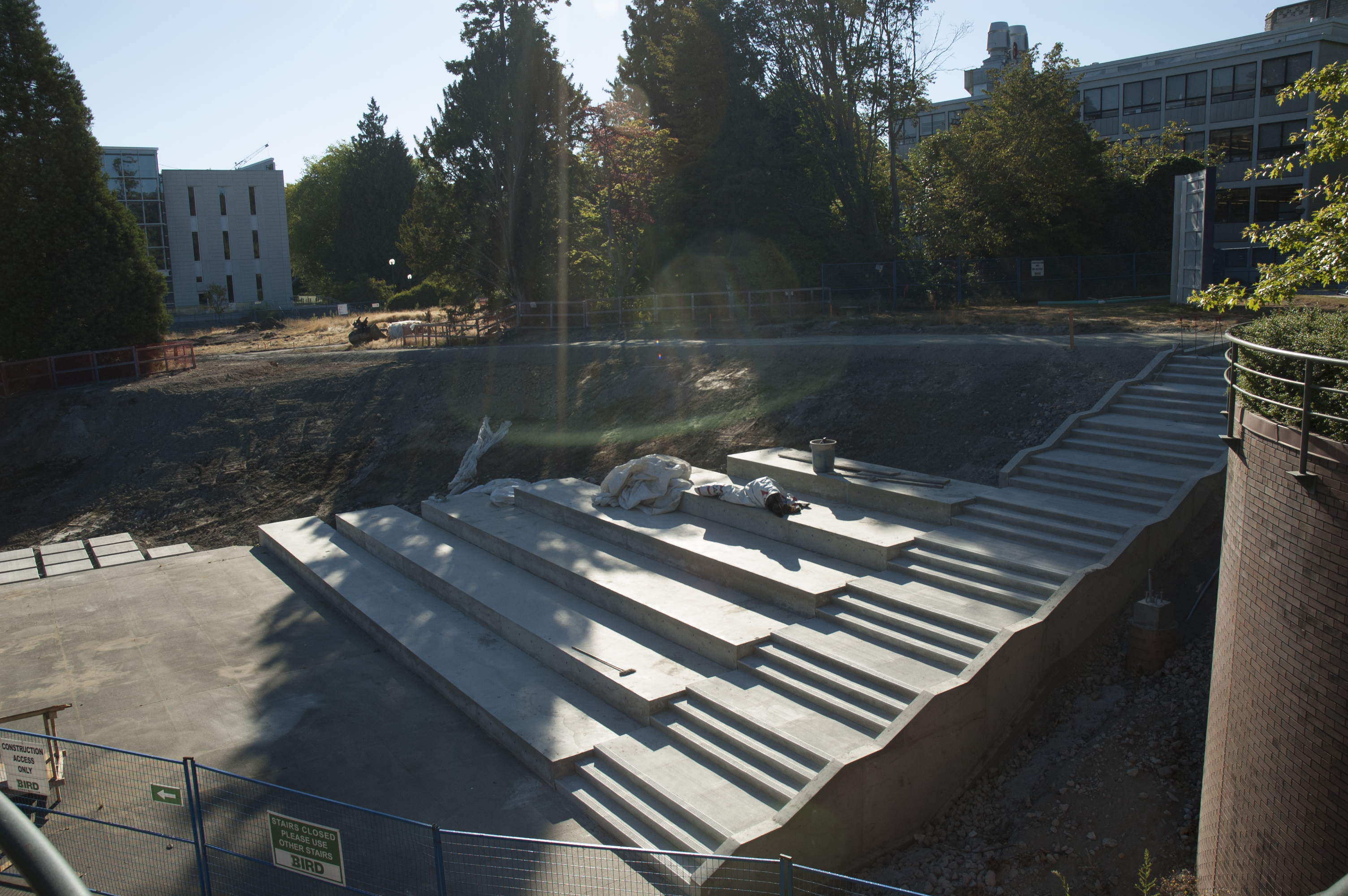
UBC is using a new landscaping project, Library Gardens, to pioneer a new standard in eco-friendly landscape architecture never before applied in Canada.
“From an ecological perspective, landscapes can and should do so much more than just look good,” says Dean Gregory.
UBC’s Landscape Architect is looking out on the construction site of Library Gardens, the area between the Koerner and IK Barber buildings, just off Main Mall. This is the historic heart of the campus and the location of the new Indian Residential Schools History and Dialogue Centre, which will open later this year.
“We are starting to look at the whole process of landscape design, development, and management,” Gregory continues, over the roar of a bulldozer. “There’s a big people aspect — we need to go beyond the merely decorative, to work at a higher social and economic level. That’s what we’re aspiring to do here.”
“Can we go further, by pushing the envelope in design, material selection, construction means and methods? Absolutely!”

The construction site at Library Gardens with I.K. Barber Library and the new Indian Residential Schools History and Dialogue Centre.
Landscapes Provide Ecoservices
Gregory remembers when LEED (Leadership in Energy and Environmental Design) first emerged as the benchmark for sustainability in construction almost 20 years ago. A lot of people were skeptical, saying it was too complicated and expensive. But within 10 years LEED had become the standard for sustainability in building, with a quarter of new construction following its “green” protocols by 2015. Now Gregory and UBC are adopting a new initiative, SITES, that promises to transform landscape architecture in the same way.
“We know that natural and well-designed landscapes provide ecoservices,” Gregory explains. “They trap and filter rainwater, clean the air, control erosion, even help in pollination. If the SITES initiative can be used as a tool to help owners, designers, materials suppliers, builders and groundskeepers to maximize these services, it’s something we as an academic institution need to champion. It’s just the right thing to do!”

Large boulders found on site will be integrated into the landscape design.
“LEED For Landscapes”
The SITES program was developed by the American Society of Landscape Architects, the Lady Bird Johnson Wildflower Center at the University of Texas at Austin, and the United States Botanic Garden. The U.S. Green Building Council (parent organization to the Canadian Green Building Council) has incorporated it into the latest LEED green building rating system.
The building-focused LEED guidelines contain few references to landscape design.
“It sets a pretty low bar for landscape sustainability. Short of recreating the gardens of Versailles, you could pretty much do anything and people would think that it’s making the world a better place,” jokes Gregory. “And at a certain level it does — but SITES helps inform landscape decision-making on so many levels: environmental, social, economic. These decisions make a huge difference in the contribution a landscape is making to the provision of environmental eco services. That’s where it’s really beneficial.”
The first premise of SITES is to preserve and conserve, rather than tearing down existing spaces and rebuilding them on an artistic whim or according to some narrow set of programmatic or budgetary requirements. Designers are then encouraged to recycle materials from the site and help sustain the natural world by incorporating native vegetation, building healthy soils and buttressing existing ecosystems.

Concrete stairs cascade down on one side of the Library Gardens.
Benchmarks and Ecoservices
Landscape architects do a lot of these things anyway, says consultant Nicole Taddune, Associate of PFS Studio, who designed Library Gardens. But with its rigorous benchmarks and rating system, SITES ensures that this process is deliberate; the designer needs to rethink their plans to achieve a high SITES grade.
“SITES sets a lot of benchmarks that are specific to the site,” Taddune says, “so we are able to really look at what it means to develop a soil management plan, green mulching requirements, things that wouldn’t come across in a normal project.”
The designers also had to look at locally sourced materials. “We were asking, where is our rock coming from, is it within the required distance?” Taddune says. “Are we looking at opportunities to reuse materials on site?”

A rendering of the Library Gardens site.
Pioneers in Canada
With Library Gardens, UBC is applying SITES for the first time in Canada. “Modelling a sustainability initiative like this in a high-profile part of our campus gives it prominence,” Gregory adds.
“I see the university as having that responsibility. This is where the country’s future decision-makers are being formed; we should be taking the lead on issues like this.”